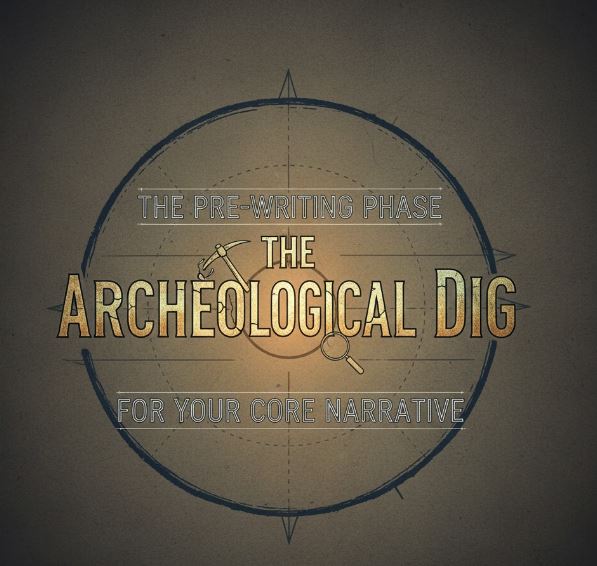In today’s saturated digital marketplace, products and services are increasingly commoditized. Features are matched, prices are undercut, and technology is replicated. In this environment, your brand’s only true, unassailable competitive advantage is its story. Understanding how to write a brand story is therefore not a soft marketing skill it is a fundamental business strategy. A brand story is not a tagline, a historical timeline, or a section on your “About Us” page. It is the living, breathing narrative ecosystem that encapsulates your purpose, connects with your customers’ deepest aspirations, and provides a “why” that transcends the “what” you sell. This ultimate guide will provide you with a deep, step-by-step framework to excavate, craft, and articulate a brand story that forges unbreakable bonds and turns casual buyers into lifelong advocates.

Why Your Brand Story is Your Most Valuable Business Asset
Before we delve into the mechanics of how to write a brand story, it’s essential to grasp its profound impact on every facet of your business. A powerful brand story is not just marketing fluff; it is a strategic asset that delivers tangible returns.
- Builds Unbreakable Trust and Humanizes Your Brand: Consumers are bombarded with advertising claims, leading to widespread skepticism. Facts and figures are processed by the logical brain, but stories are processed by the emotional brain. An authentic narrative allows people to connect with your mission and values on a human level, building a foundation of trust that transactional relationships can never achieve. When Patagonia tells a story about its commitment to the planet, it’s not just selling a jacket; it’s inviting you to join a cause.
- Creates Crystal-Clear Consistency Across All Touchpoints: A well-defined brand story acts as an internal compass for your entire organization. It answers critical questions: What voice do we use on social media? What partnerships do we pursue? What does our customer service experience feel like? When everyone from the CEO to the intern understands the core narrative, every customer interaction becomes a consistent chapter in the same story, reinforcing your brand identity.
- Fosters Deep, Emotional Loyalty That Defies Price Sensitivity: A customer might make an initial purchase based on a feature or a price point. However, they will stick with you through competitors’ promotions and market fluctuations because of a shared belief. Harley-Davidson doesn’t sell motorcycles; it sells a badge of rebellion and freedom. This emotional connection, forged through storytelling, is the bedrock of customer retention and lifetime value.
- Justifies a Price Premium and Differentiates You in a Crowded Market: When two products are functionally similar, the one with the better story wins. A compelling narrative adds a layer of perceived value that customers are willing to pay for. Apple is the master of this, framing its technology not as mere gadgets but as tools for creativity and human connection. Your story provides the context that makes your product indispensable.

The Pre-Writing Phase: The Archeological Dig for Your Core Narrative
You cannot write a story you haven’t discovered. This phase is the most critical, requiring deep introspection and honesty. Rushing this step is the primary reason why many brand stories fall flat.
Step 1: Unearth Your “Why” with Radical Clarity
This is the non-negotiable heart, the soul of your story. Simon Sinek’s “Golden Circle” provides a perfect framework for this excavation. Start from the inside and work your way out:
- WHY: What is your purpose, cause, or belief? Why does your organization exist beyond making a profit? What change are you trying to effect in the world? (e.g., “To empower every individual to express their unique creativity.”)
- HOW: How do you bring that “Why” to life? What is your unique method, your guiding principle, or your value proposition? This is what makes you different. (e.g., “By making complex design tools intuitively simple and accessible.”)
- WHAT: What do you actually do or sell? This is the tangible proof of your “Why” and “How.” (e.g., “We create user-friendly graphic design software.”)
Your entire brand story must radiate from this core “Why.” It is the seed from which your narrative grows.
Step 2: Identify Your True Protagonist: Your Customer
This is the most common and catastrophic mistake brands make: casting themselves as the hero. In every great story, from The Odyssey to Star Wars, the hero is the one who undergoes the transformation. Your customer is Luke Skywalker. Your brand is Obi-Wan Kenobi. You are the guide.
To define your protagonist, you must develop deep customer empathy. Ask:
- What are their hopes, dreams, and aspirations?
- What is the “villain” they are fighting? This villain can be:
- External: A slow computer, clunky software, unhealthy food.
- Internal: Self-doubt, frustration, a feeling of inadequacy.
- Philosophical: “It’s not right that this is so difficult,” or “Everyone deserves to feel confident.”
Step 3: Articulate Your Mission and Vision
These statements provide the narrative arc for your story.
- Mission Statement (The Plot): This is your goal—what you do every day to help the hero. It’s action-oriented and present-tense. (e.g., “To provide the tools, education, and community that unlock creative potential in everyone.”)
- Vision Statement (The Happy Ending): This is your dream—the future you are helping to build. It’s aspirational and future-tense. (e.g., “A world where no great idea goes unexpressed due to a lack of technical skill or access.”)
The Writing Process: Structuring the Hero’s Journey for Your Brand

With your core elements defined, you can now structure them into a compelling narrative. The most effective framework for this is Joseph Campbell’s “Hero’s Journey,” adapted for business by thought leaders like Donald Miller in his “StoryBrand” framework.
Act I: The Ordinary World and The Call to Adventure (The Beginning)
Start by describing the world from your customer’s perspective. Introduce the hero and establish their “ordinary world.” Then, introduce the conflict—the “villain” they are facing.
- Example Narrative: “Meet Sarah, a passionate small business owner with a incredible product (the hero). She pours her heart into her work, but when it comes to building her website and creating marketing materials, she hits a wall (the ordinary world). She’s confronted by the perception that professional branding is complex, expensive, and only for big corporations with massive budgets (the villain). This frustration makes her feel stuck and unable to compete on the scale she knows she deserves (the call to adventure).”
Act II: Meeting the Guide and The Plan (The Middle)
This is where your brand enters the story. You are not the hero who defeats the dragon; you are the guide who provides the map and the sword. Position yourself as empathetic (“I understand your struggle”) and competent (“I have a solution to your problem”).
- Example Narrative: “We’ve been there. We saw brilliant entrepreneurs like Sarah being held back by this very same challenge, and we knew it was wrong (empathy). That’s why we created [Your Platform]—a powerful yet intuitive toolset designed specifically for non-designers (the plan). We believe that great design is a fundamental part of telling your story, not a privilege reserved for a select few.”
Act III: The Action and The Transformed World (The End)
Paint a vivid picture of what success looks like. Describe the hero’s journey using your plan and, most importantly, the emotional outcome of their transformation.
- Example Narrative: “With [Your Platform], Sarah didn’t just get a design tool; she found a partner. She quickly created a stunning, professional website that truly reflected the quality of her brand. The result wasn’t just a set of graphics; it was the confidence to pitch to bigger retailers, the pride she felt when handing out her business card, and the freedom to focus on what she does best—running her business. She had successfully slayed the dragon of doubt and stepped into her new role as the confident leader she was always meant to be (the transformed world).”
Bringing Your Brand Story to Life: From Page to Experience
Knowing how to write a brand story is futile if it remains a document in a drawer. It must be woven into the very fabric of your customer’s experience.
- Your Website and “About Us” Page: Rewrite your homepage to follow this narrative structure. Your “About Us” page should tell this story, not list your founding year and company values as bullet points.
- Content Marketing: Every blog post, video tutorial, or social media caption should provide the “guidance” your hero needs. A post titled “5 Ways to Improve Your Logo” is a tactical piece of guidance from the wise mentor.
- Customer Testimonials and Case Studies: Frame these as mini hero’s journeys. Use the customer’s own words to describe their “before” (the problem), their “during” (using your solution), and their “after” (the transformation).
- Visual Identity and Voice: Your logo, color scheme, and brand voice should be visual and tonal representations of your story. A brand built on a story of “serene simplicity” should not use loud, chaotic colors or slang-heavy language.
The Unbreakable Rule: Authenticity is Non-Negotiable
The ultimate secret to mastering how to write a brand story is to ensure it is unshakably authentic. Your story is a promise you make to the market. Your product quality, your customer service, your internal culture, and your ethical practices are the fulfillment of that promise. Any gap between your narrative and your reality will be exposed, eroding trust faster than any story can build it. Your story must be built on truth like you have brand storytelling experience, and your business must live that truth every single day.
By following this comprehensive framework, you move beyond selling a product to offering an identity, a belief, and a role in a story more significant than a single transaction. You stop being just another option and start becoming the only logical choice.

